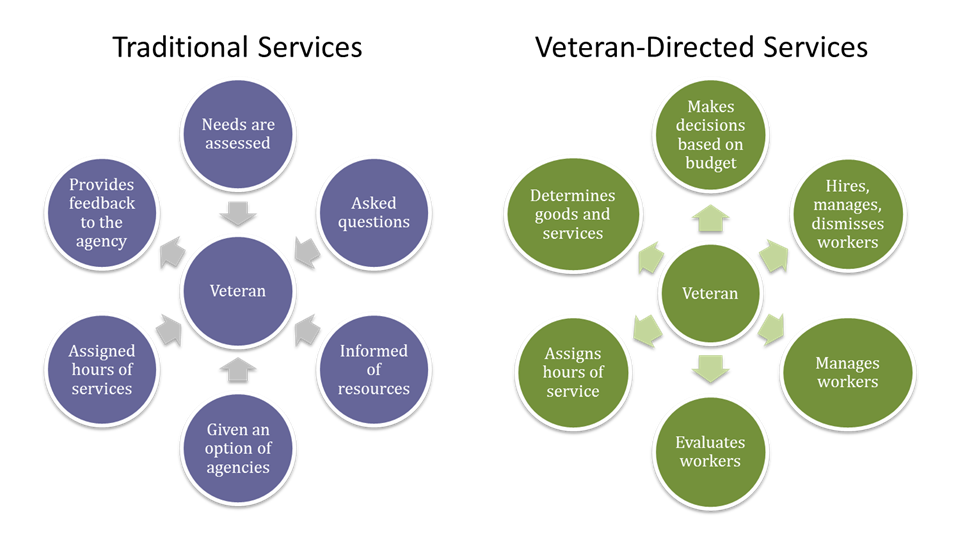As a result of the excellent service and funding from this program, I am able to continue living on my own with my dog, in my own home, even though I am 90 years old and blind.

I enrolled in the VA program because I was taking care of my husband 18 hours a day…for the first time in a long time I am free to leave my house…To not be stuck in the house 7 days a week is highly beneficial for the emotional outlook. I am not as depressed as I was. I don’t sleep as much. I am out there enjoying life.
My daughter has lost so much of her independence and she is so young. This program allows her to live in the community where she grew up, close to her support network, and it gives her a degree of control over her care and her future.
- VDC Provider COVID-19 Listening Session
- VDC Provider COVID-19 Listening Session FAQ
- Tips for a Successful Remote Visit for Providers
- Tips for a Successful Remote Visit for Veterans
- Assistive Technology Services Flow
- VDC Educational Webinar, Overview of New Resources: Billing and Invoicing Guide, Monthly Spending Plan Template, and Monthly Services Report Template
- Recording
- FY2020 Case Mix Rates and Veteran Care Agreement Tools and Policies
- Veteran Care Agreement Training Requirements
- A Better Way to Care for Our Veterans?
By: Mary Lazare, ACL Principal Deputy Administrator
- Special Event Honoring our Veterans
Check out this brief video of Acting HHS Secretary Eric Hargan visiting the home of a Veteran participating in the VDC program and attending the event in Mechanicsville, VA. Additional details of the event and links to media coverage can be found on the resources page.